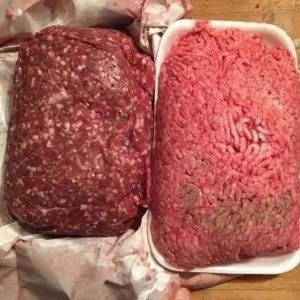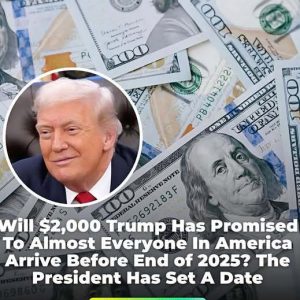In the span of only a few days, the United States found itself enveloped in a swirl of fast-moving speculation, fed by a mix of political chatter, viral social-media threads, and a national atmosphere already primed for dramatic developments. The seed of the rumor was simple: former President Donald Trump was preparing to announce something economically significant, something big enough to impact households across the country. Yet the simplicity of the rumor was exactly what made it fertile ground for interpretation, and soon hundreds of variations began circulating. Influencers claimed to have insider information; television pundits dissected ambiguous statements from Trump’s advisors; podcast hosts analyzed obscure comments made at rallies; and ordinary Americans followed along, trying to decipher what any of it meant. Some believed a new tax proposal was coming, others floated ideas about energy rebates, and still others insisted that the rumor referred to debt relief of some kind. The most popular theory, however, revolved around payments—direct economic aid reminiscent of stimulus checks but justified by a different kind of funding mechanism. As the online world spun itself into a frenzy, every vague gesture Trump made on Truth Social or at public appearances was interpreted as confirmation. Hashtags surged, political talk shows devoted entire segments to “what might be coming,” and financial commentators speculated about the potential effect on markets. That a single rumor could grip the country so profoundly demonstrated how deeply intertwined American political culture has become with the constant expectation of dramatic presidential action. Even those skeptical of Trump’s intentions felt compelled to follow the developments, if only because millions of others seemed convinced that something extraordinary was on the horizon.
The suspense that had built up over the week finally broke on a quiet Sunday morning, when Trump took to Truth Social to deliver the announcement that had been anticipated so anxiously. In a characteristically direct and declarative post, he confirmed that every American adult would receive what he called a $2,000 “tariff dividend,” a direct payment that he claimed would be financed entirely by tariff revenue collected under his administration. With the post, he attempted to position himself once again as a champion of everyday Americans—those he frequently describes as forgotten by Washington’s political establishment. He framed the dividend not merely as an economic measure but as a moral obligation, asserting that the American people were entitled to share in the financial gains he attributed to his aggressive tariff policies. The language he used echoed themes that have been central to his political identity: claims of fighting for the working class, denunciations of elite policymakers, and the presentation of himself as uniquely willing to redirect federal power and resources toward ordinary citizens. Trump had long portrayed tariffs as a tool of national strength and economic leverage, and in announcing the dividend he attempted to extend that narrative further, arguing that the revenue generated through tariffs represented an American victory—one he believed should be distributed back to the public. His post ended with a flourish typical of his rhetoric: a suggestion that the dividend was only the first example of how tariff policy could reshape American prosperity if managed with toughness and resolve. Supporters embraced the message immediately, sharing screenshots of the announcement within minutes and framing it as a long-overdue reward for the sacrifices they believed Americans had made under globalized trade.
In a series of follow-up explanations, Trump asserted that tariff revenue—especially from duties imposed on imports from China—had surged to levels that made direct payments not only possible but natural. He claimed that his firm stance against foreign trade practices had forced other countries to pay up, generating funds that he believed could be redistributed to American households. In presenting the policy this way, Trump sought to portray tariffs not merely as a trade tool or a protective measure but as a kind of national profit, generated externally and returned internally. Describing the $2,000 amount as fair, sustainable, and economically justified, he argued that such a dividend would validate the philosophy underlying his trade agenda: that the United States had been economically exploited by foreign competitors and that strong leadership could reclaim wealth on behalf of the American people. Trump’s framing of the dividend, therefore, served dual purposes: it offered immediate financial relief to households at a time of inflation and financial stress, and it symbolically reinforced his view of tariffs as a powerful weapon capable of reshaping global economic dynamics. His supporters embraced this narrative enthusiastically, interpreting it as evidence that tariffs did more than protect American industries—they could directly enrich American citizens when used strategically. In Trump’s telling, this dividend was not an isolated act of generosity but a demonstration of what could be achieved when America adopted a more confrontational economic posture. He portrayed the policy as both economically practical and morally necessary.
The response to the announcement was swift and polarized, reflecting deep ideological divisions about Trump’s broader economic and political legacy. Among his supporters, the proposal was celebrated as a decisive and compassionate move. For many households facing rising costs of living, even the possibility of a direct payment was a welcome source of hope. Social media platforms, especially those aligned with conservative audiences, were flooded with posts praising Trump for delivering tangible benefits rather than abstract policy promises. Some users shared personal stories about medical bills, childcare costs, and debt burdens, arguing that the dividend would offer meaningful relief at a time when wages often seemed outpaced by inflation. Others viewed the announcement as more than financial assistance—they saw it as proof that Trump’s trade policies, long criticized by mainstream economists, had produced measurable gains. The enthusiasm among these groups was driven not only by economic need but also by a belief in Trump’s narrative of reclaiming national wealth. For them, the dividend was a victory: a reclaiming of resources they believed had been siphoned away through unfair trade relationships. The fact that no previous president had proposed distributing tariff revenue directly to citizens was treated as further evidence that Trump operated outside the confines of conventional political thinking, unafraid to break norms in order to serve the people who supported him.
Critics, however, responded with immediate skepticism and alarm. Economists and policy experts pointed out that tariff revenue does not function in the way Trump described. They emphasized that tariffs are overwhelmingly paid by domestic importers, not by foreign governments, meaning the costs are often passed down to consumers in the form of higher prices. This raised immediate questions about the accuracy of Trump’s claims regarding the source and magnitude of the funds. Several analysts warned that the term “tariff dividend” itself was misleading, suggesting a surplus of external revenue when, in reality, tariffs often act as domestic taxes. Questions also arose about the legality of distributing such revenue without congressional approval, since the U.S. Constitution places control of federal spending in the hands of Congress, not the president. Policy specialists expressed concern that the announcement might be politically motivated rather than economically grounded, aimed at energizing Trump’s base and shaping the national conversation without any guarantee of implementation. Some critics went further, arguing that the proposal risked oversimplifying complex economic issues and misleading the public about how trade policy actually works. These criticisms circulated rapidly across major news outlets, prompting heated debates between analysts who saw the announcement as a potentially dangerous maneuver and Trump supporters who viewed it as bold, necessary action. The competing narratives contributed to widespread confusion, as many Americans struggled to understand whether the payment was feasible, justified, or even real.
Amid this political and economic turbulence, ordinary Americans found themselves trying to interpret what the announcement meant for their daily lives. This uncertainty reflected the broader challenge of navigating complex information landscapes in a highly partisan era. People asked practical questions—who would qualify for the payment, when would it arrive, what documentation might be needed, and whether the dividend would affect taxes or future government benefits. Others considered larger issues: Would this policy alter America’s trade relationships? Would it intensify existing tensions with China? Could it lead to inflation or budget deficits? Without detailed implementation plans, many citizens were left sorting through contradictory claims presented by political figures, media outlets, and social-media influencers. The absence of clear answers only heightened the sense of confusion. In the broader political arena, Trump’s announcement succeeded in doing exactly what it appeared designed to do: dominate public discourse, force policymakers and experts to respond, and position himself at the center of a national debate about economic fairness and presidential authority. Whether the “tariff dividend” becomes a beloved policy, a contested proposal, or a political symbol that never materializes, its announcement has already reshaped the national conversation. It has reignited debates about tariffs, highlighted tensions between expert analysis and populist rhetoric, and illustrated once more how a single message from Trump can reverberate across the country, prompting millions to wonder how decisions made in Washington might influence the money in their pockets and the future of the American economy.





